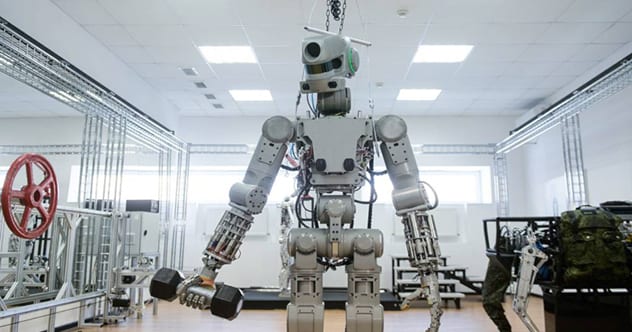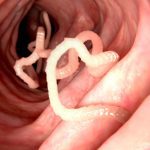 Weird Stuff
Weird Stuff  Weird Stuff
Weird Stuff  Our World
Our World 10 Ways Your Christmas Tree Is More Lit Than You Think
 Movies and TV
Movies and TV The 10 Coolest Stars to Set Sail on The Love Boat
 History
History 10 Things You Didn’t Know About the American National Anthem
 Technology
Technology Top 10 Everyday Tech Buzzwords That Hide a Darker Past
 Humans
Humans 10 Everyday Human Behaviors That Are Actually Survival Instincts
 Animals
Animals 10 Animals That Humiliated and Harmed Historical Leaders
 History
History 10 Most Influential Protests in Modern History
 Creepy
Creepy 10 More Representations of Death from Myth, Legend, and Folktale
 Technology
Technology 10 Scientific Breakthroughs of 2025 That’ll Change Everything
 Weird Stuff
Weird Stuff Ten Bizarre Facts About The Doge Meme
 Our World
Our World 10 Ways Your Christmas Tree Is More Lit Than You Think
 Movies and TV
Movies and TV The 10 Coolest Stars to Set Sail on The Love Boat
Who's Behind Listverse?

Jamie Frater
Head Editor
Jamie founded Listverse due to an insatiable desire to share fascinating, obscure, and bizarre facts. He has been a guest speaker on numerous national radio and television stations and is a five time published author.
More About Us History
History 10 Things You Didn’t Know About the American National Anthem
 Technology
Technology Top 10 Everyday Tech Buzzwords That Hide a Darker Past
 Humans
Humans 10 Everyday Human Behaviors That Are Actually Survival Instincts
 Animals
Animals 10 Animals That Humiliated and Harmed Historical Leaders
 History
History 10 Most Influential Protests in Modern History
 Creepy
Creepy 10 More Representations of Death from Myth, Legend, and Folktale
 Technology
Technology 10 Scientific Breakthroughs of 2025 That’ll Change Everything
10 Surprising Uses Scientists Have Found for Plastic Waste
Plastic waste is a never-ending world problem. Everyone knows the world is drowning in plastic. Literally. Researchers predict that if we keep going the way we are, there will be more plastic than fish in the ocean by 2050. However, scientists have been hard at work developing clever and inventive things to do with all of those plastic bags, bottles, and straws.
More than merely recycling, these innovators have come up with surprising ways to transform plastic waste into something else entirely. For example, used plastic has been turned into items such as vanilla flavoring, protein powder, and bricks stronger than concrete.
Related: Top 10 Fascinating Things Scientists Discovered About Salt
10 Plastic Bottles Converted into Vanilla Flavoring
In the category of killing two birds with one stone, scientists are working to solve the problem of plastic bottle waste at the same time as they deal with the world’s high demand for vanilla flavoring. Vanillin is what makes the odor and flavor of vanilla, and it’s either extracted naturally from vanilla beans or made from chemicals. As a result, vanillin is used in more products than just baked goods. The substance is also found in a variety of foods and even in things like cleaning products and cosmetics.
As the global demand for vanillin increases, plastic bottles may hold the answer. Two researchers at the University of Edinburgh in Scotland have figured out how to convert terephthalic acid into vanillin using E. coli bacteria. (Terephthalic acid is the basic subunit broken down from plastic bottles made with polyethylene terephthalate.) Strangely enough, terephthalic acid and vanillin are similar in their chemical composition, and it didn’t take much for the researchers to convert the substance to vanillin.[1]
9 Plastic into Jet Fuel in Less Than an Hour
Although chemical recycling of plastic waste creates high-quality products and has been possible for some time, it’s generally cost-prohibitive as it requires massive amounts of energy and long processing times. However, researchers at Washington State University have come up with a way to convert plastic into jet fuel in less than an hour.
The researchers converted polyethylene (a commonly used form of plastic) into jet fuel and other high-value lubricants. They did this by creating a catalytic process that converted almost 90% of the plastic into fuel. And it took them less than an hour to do so. The process wasn’t only faster but used less energy than previous methods. The team is currently working on upgrading its conversion process for commercial use. With its lower temperatures and fast processing times, their discovery could be a game-changer in the world of chemically recycling plastic.[2]
8 Plastic Could Help End Sand Shortages
Considering the vast number of expansive beaches across the globe, it may be hard to believe the world is experiencing a sand shortage. However, a lot of sand is needed for construction and manufacturing, and it’s also used to make concrete. But the stuff you see on the beach is too salty, and the sand from the desert is too smooth. As a result, sand for construction tends to be dredged from rivers, which leads to all sorts of environmental problems, and has been banned in many countries leading to a bizarre underworld of sand mining controlled by “sand mafias.”
Researchers are working on this and have found plastic waste can be sorted, cleaned, shredded, and crushed into sand when mixing concrete. This method replaced up to 10% of the sand used in the concrete mix while retaining the same properties. Since concrete is made up of about 25% sand, replacing 10% with plastic could have a sizeable impact on reducing the world’s need for “mafia” sand.[3]
7 Turning Plastic into Fertilizer
It’s estimated that just under 9% of plastic waste is recycled. The rest is tossed and ends up dumped in landfills and floating in the oceans. Experts hope to solve this problem by finding ways in which plastic can easily be reused rather than thrown away. A team of researchers at the Tokyo Institute of Technology has discovered a method to chemically convert bio-based plastics into fertilizer. Bio-based plastics are used as a more sustainable alternative to petroleum-based plastics.
The scientists used the process of ammonolysis to create urea (a nitrogen-rich substance) out of ISB, which is a byproduct of (PIC) a bio-based plastic. To test out the fertilizer, the researchers conducted plant growth experiments and found the plants which used the PIC fertilizer grew better than plants that were only given regular fertilizer.[4]
6 Plastic Waste Converted Into T-Shirts
How about solving the world’s plastic bag problem by turning plastic bags into high-tech workout clothes that can easily be recycled? A study published in Nature Sustainability looks to do just that. In the study, researchers took polyethylene, the most common plastic used today and the type of plastic that makes up plastic bags, and turned it into a wearable fabric.
The fabric is made by weaving polythene fibers on industrial looms into textiles that researchers say are less damaging to the environment than traditional textiles like wool and cotton. The fibers can be dyed into different colors before the weaving process. Instead of repelling water as plastic does, these fibers allow water to escape. This means when you workout, your sweat won’t get trapped inside of the clothing but will wick away, making the materials suitable for exercise. Also, clothes made from polythene material can be washed in cold water, further helping the environment by reducing the need for hot water.[5]
5 Convert Plastic into Electricity
What if, instead of polluting the oceans, plastic waste could be converted into a chemical that is used to generate electricity in power plants and electric cars? Researchers at Nanyang Technological University, Singapore (NTU Singapore) found that they could convert plastic waste into formic acid by using sunlight. Formic acid is a valuable chemical used in fuel cells to generate electricity.
By using a photocatalyst, powered by sunlight, to convert the plastic waste, the chemists hoped to develop a sustainable and environmentally friendly method for the conversion. This method avoids the need to generate high heat levels by burning fossil fuels. The team continues to improve the process and is working on breaking down plastics to produce fuels such as hydrogen gas.[6]
4 Plastic Turned into a Detergent
In another approach that uses cleaner methods for breaking down plastic waste, instead of requiring high levels of energy for the process, researchers found a way to create a liquid from plastic waste that can be used to make detergents. Teams collaborating from UC Santa Barbara, the University of Illinois Urbana-Champaign, and Cornell discovered a process in which polyethylene can be turned into smaller molecules without using high temperatures and without releasing greenhouse gases.
The scientists used a catalyst to remove a little bit of hydrogen from the plastic’s polymer chain and then used that hydrogen to cut the carbon chain, making smaller pieces. The hydrogen had to be used right away to cut the chains, thus providing enough energy to make more hydrogen. After many repetitions, the researchers ended up with a liquid that could be used to make detergents.[7]
3 Plastic Milk Jugs Converted into Very Strong Bricks
Nzambi Matee from Nairobi, Kenya, takes recycled trash that other recycling facilities can’t use, such as sandwich bags, milk jugs, and ropes, and turns the waste into sturdy plastic bricks. Her company, Gjenge Makers uses sand and plastic mixed together and heats them at high temperatures, compressing them into bricks. Though you may not expect it, her plastic bricks are stronger than concrete.
The great thing about this product is that it’s made from the sort of materials that usually end up in landfills because recycling centers can’t accept them. The bricks consist of high-density polyethylene (milk and shampoo bottles), low-density polyethylene (cereal bags and sandwich bags), and polypropylene (ropes and buckets). And because neither the process nor the materials are expensive, Mattee can keep the cost of the bricks low, making the product affordable for Kenyan citizens.[8]
2 Plastic Waste Converted into Food
Would you eat a protein powder that was formerly a used plastic bottle? Two professors from the University of Illinois Urbana-Champaign and Michigan Technological University are hoping someone will. Their research aims to solve the problems of world hunger and overflowing landfills. Ting Lu and Stephen Techtmann received the Merck KGaA’s Future Insight Prize for their work in converting plastic waste into food by using microorganisms to metabolize the waste.
The researchers accomplished this by breaking down plastic waste and feeding it to hungry plastic-loving bacteria. As the bacteria eat the plastic, they thrive, creating more bacteria cells that can be dried and turned into edible protein powder. This leaves us with the question, will consumers be willing to accept a food product that was originally made from plastic trash?[9]
1 Converting Plastic Back into Plastic
One major problem with recycling materials is that plastic continues to degrade over time. Plastic can’t be infinitely recycled. Recycling will not stop plastic waste from ending up in a landfill, but it does delay it for a bit. However, what if scientists could break down plastic waste by using chemical methods and turn it back into its original chemical building blocks? From there, the materials could then be used to create brand-new plastic products.
When plastic is melted and reused, it is harder to process and becomes a lower-grade plastic. Eventually, its polymer chains break down so much they can no longer be reused and get thrown away. Scientists hope to use chemical recycling to solve this problem by breaking the plastic down to its original materials. It can then be used to create new, higher-quality plastic products and stay out of landfills.[10]








